NFTU
Tools for NFTs: The Mint
Published
2 years agoon
Despite the Crypto Winter, Non Fungible Tokens, or NFTs, have gained enormous popularity. For many, this is just the beginning. NFTs have given rise to a brand-new class of investor and investment vehicle, the “Digital Investor” and the “Digital Investment.” There were hundreds of thousands of dollars’ worth of winning opportunities in the NFT markets for individuals who weren’t afraid to go in early. Developers that have historical knowledge of how empires emerge have developed tools to provide the digital investor a competitive edge when trading NFTs as more attention is being paid to the NFT space. Dynasties like the Rockefeller and De Beers families made their money by selling picks and shovels; they did not become wealthy by digging holes. The NFT market is a little different because both those who sell shovels and those who dig holes have the potential for lucrative opportunities.
What has to be watched after an NFT decrease to provide the new breed of investor a competitive edge is what the mint is doing. The process of minting involves completing a deal for an NFT sale. The relevant blockchain is formally updated with the transaction details. If there is a spike in minting activity following a fresh NFT drop, it may be necessary to look into the trading and minting potential of that specific project. If a drop that has received a lot of attention has little to no minting activity. Despite all of the fanfare, there may not be much immediate trading possibilities for that enterprise.
A minting scanner is a device that has been developed to keep track of minting activity. Every NFT mint scanner brand has a different level of efficiency. We’ll talk about some important aspects of how useful collecting data is. Moby.gg is one of the more well-known mint scanners on the market. Every Ethereum contract that is created is watched by Moby. Since Ethereum continues to be the most popular blockchain for NFTs, having access to that data can be quite helpful. Moby offers real-time data; the demo version shows you information from the previous hour. Additionally, Moby offers data from the most recent moment for a fee of 0.1 ETH ($168.126 at the time of this writing) for a period of six months. You can obtain data and look for NFTs that are highly ranked for future trades using Moby’s real-time rankings. Although an NFT mint ranking may be high, it might also be a white listed project, which is one of Moby’s shortcomings. Therefore, before engaging in any trading method or activity, exercise caution and do your homework. You may set up alerts and notifications for well-liked new mints on Moby. The program enables you to immediately track the activities of any wallet you’ve found that has a high rate of success in minting or exchanging NFTs.
Whatsminting.live offers comparable information to moby, however it is now free and a great resource for newcomers to the world of digital investing. Whatsminting not only provides statistics for Ethereum but also for other platforms. This application is a top choice for digital investors thanks to its features and free access.
Tools for blockchain analysis have been discussed. We’ve provided resources to help you transition from an NFT’s conceptualization, such as twitter followers. You can access drop information for newly minted NFTs using the tools we’ve provided. And today we made the NFT minting scanner public. We’ll keep looking for and giving you more tools that can provide the “Digital Trader,” a new type of investor, an edge over the general public. The means for interacting with this kind of investment will improve as digital investing develops. Our team at Finwars is committed to providing you with relevant information so you may trade and conduct research in the NFT industry.
Read More NFT News Here
You may like
NFTU
NFTs: The Future of Digital Ownership and the Risks Involved
Published
2 years agoon
January 17, 2023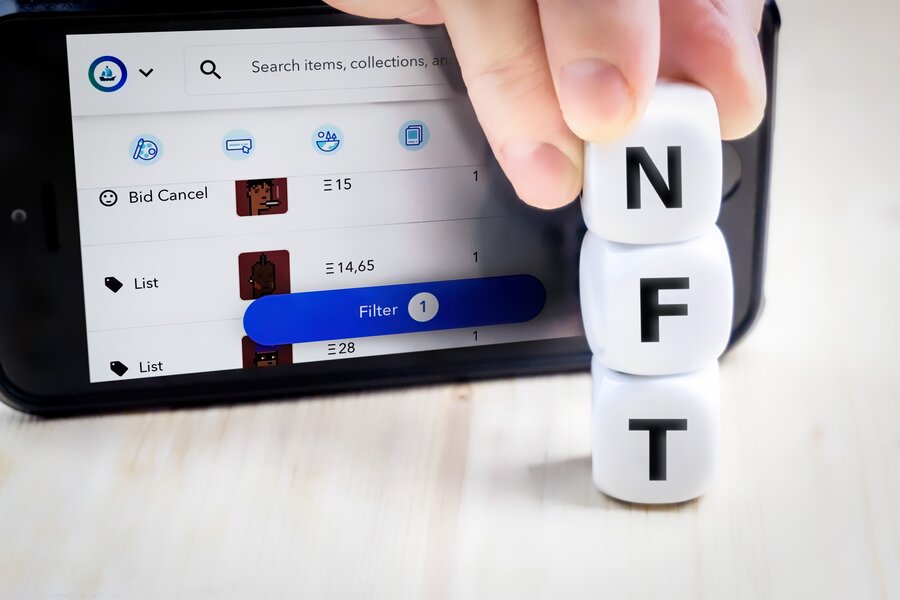
The term “Non-fungible” refers to the fact that the word “Non-fungible” refers to a dictionary. Several NFTs fetched millions of dollars, with one work, Pak’s “The Merge,” fetching more than $90 million. Their moment in the spotlight, however, was fleeting. Last year, interest in almost anything crypto-related waned, including NFTs.
What exactly is an NFT?
To comprehend a non-fungible token, think of it as a digital certificate of ownership. These certificates are then recorded on the blockchain, forming a secure, permanent record that cannot be tampered with. Anything, including music, art, movies, and even my coffee cup, may be turned into an NFT.
Without going too scientific, non-fungible refers to something that is distinct and cannot be interchanged. So a $1 bill is fungible since the bill itself isn’t unique; it can be substituted with any other dollar bill and still be spent. However, if that $1 note had been signed by George Clooney, it would have become one-of-a-kind, non-fungible, and worth more than a dollar.
Find out where to buy bitcoin.
More: See our most recent list of the top crypto applications, which includes one deal with a $100 coin incentive.
What does it mean to’mint’ an NFT?
The process of posting an NFT on the blockchain is known as minting an NFT. There are a few options based on how much you’re ready to pay and the market you’re aiming to target. You’ll need the following two items in addition to the work you wish to transform into an NFT:
The NFT wallet
An account with a non-traditional trading marketplace.
There are a variety of NFT markets. Consider the platform’s repute, the size of its community, the fees it charges, and how user-friendly it is to discover which one is best for you. Some markets feature an authentication procedure for content providers, which effectively certifies you as a reputable vendor. If you want to get authorized, be prepared to jump through some hoops.
It’s also critical to think about which blockchain you want to mint on. For each transaction on the blockchain, you must pay a gas price.
Although gas prices on Ethereum (ETH) are higher than on other chains, Ethereum is the most popular blockchain for NFT sales. Some NFT platforms, such as Polygon (MATIC), Solana (SOL), and Avalanche, will allow you to mint on other chains (AVAX).
A few sites will allow you to avoid gas fees entirely by only recording the NFT on the chain when someone agrees to buy it. It’s also referred to as gas-free minting or lazy minting.
The buyer will pay the minting expenses in this case. This, however, may make it more difficult to market your work.
The Benefits and Drawbacks of NFTs
This technology, like many others connected to blockchain, is in its early stages, and we have no idea how it will develop. There is an undeniable utility in being able to maintain a digital proof of ownership, and crypto enthusiasts claim that one day we may utilize NFTs to store real estate records, among other things.
NFTs have the potential to revolutionize the way we own and sell goods.
One of the frequently mentioned advantages of NFTs is that they empower innovators. Artists, for example, can claim credit for something they created and, in some situations, get royalties when the piece is sold. Plus, musicians and artists don’t need to rely on galleries or record companies to sell and market their work, as they may engage directly with their audience
Once an NFT is minted, it is simple to monitor the authenticity of each piece, including who possessed it and who manufactured it. That’s all well and good. Unfortunately, individuals have been minting NFTs of work they did not produce and selling them on NFT marketplaces without the artist’s consent.
NFT fraudsters and scammers have stolen hundreds of millions of dollars in various methods.
In conclusion
The 2021 NFT market bore many similarities to the dot.com bubble of the early 2000s. Ordinary works of art became more precious just because they were NFTs.
People who had never purchased art before gambled on digital assets with the aim of becoming wealthy. That is not to say that NFTs are fundamentally useless.
Indeed, it has the potential to be a component of the next generation of the internet, transforming the way we own things.
But if you’re going to dabble with NFTs, don’t just purchase or mint them for the sake of it. Use this technology as a tool and comprehend the item’s worth.
Minting NFTs has an environmental and physical cost, and there are no guarantees that you will recoup your minting expenditures. Because NFTs are vehicles, they are neither intrinsically valuable nor necessarily worthless.
Everything is determined by what is contained within.
For More NFT News, Click Here.
NFTU
Become an NFT Pro: Essential Lingo for Every NFT Collector
Published
2 years agoon
January 9, 2023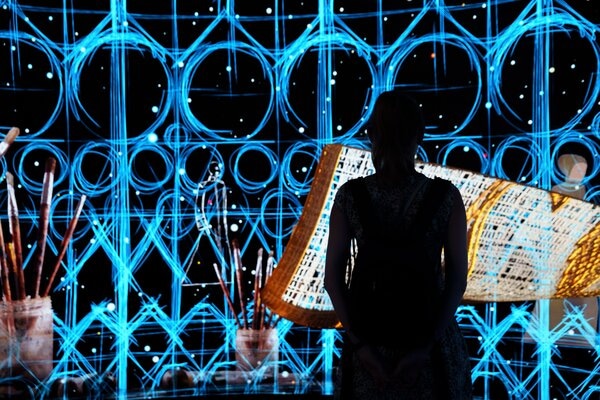
Brush up on your jargon with our beginner-friendly dictionary before you “ape” into NFT trading.
NFT lingo are words that beginners in the world of NFT should understand, below information should help you get started.
Non-Fungible Tokens (NFTs) have gained in popularity in recent years, spawning subcultures and pockets of zealous collectors.
As these groups grew, so did the nomenclature used to identify various persons, initiatives, and trading practices in the NFT arena.
Those unfamiliar with NFTs may come across social media colloquialisms popularized by NFT traders. If you’re new to “sniping,” here are some terminology to be familiar with in order to better grasp the NFT market.
The ultimate NFT Lingo Glossary for beginners
Airdrop: A free deposit of cryptocurrency or NFTs into a person’s private crypto wallet. NFT programs frequently provide airdrops to established community members or those who fulfill certain social media activities.
Alpha: Exclusive information on an NFT initiative that may provide traders with a competitive advantage. Alpha groups are often formed in order for members to exchange unique information with one another.
Allowlist: A list of wallet addresses prepared by an NFT project before minting that ensures certain persons a slot. This is sometimes known as a “whitelist,” though that phrase has mostly been phased out.
AMA: An abbreviation for “Ask Me Anything.” These question-and-answer sessions are often hosted by NFT authors on social media sites such as Twitter, Discord, or Reddit.
Ape: To “ape” into an NFT project means to purchase a token quickly after its introduction without conducting an extensive investigation. “APE” might also refer to the Ethereum-based ApeCoin, which supports the Bored Ape Yacht Club environment.
Axie Infinity: Sky Mavis’ popular blockchain-based game “Axie Infinity” has a playable NFT character named Axie.
BAYC: Shorthand for Yuga Labs’ popular NFT collection “Bored Ape Yacht Club,” which was released in 2021. Other initiatives in the BAYC ecosystem, such as Mutant Ape Yacht Club (MAYC) and Bored Ape Kennel Club, use similar initials (BAKC).
Blue chip: A word used to denote top-tier NFT initiatives that are predicted to be long-term steady and lucrative.
To “burn” an NFT is to remove it from circulation by storing it in a wallet that no one can access. NFTs may be burnt as a form of payment for a tangible product or as an upgrade to an existing NFT.
Dapper Labs’ CryptoKitties: released in 2017, was one of the first successful NFT games on the Ethereum blockchain. At one point, demand for CryptoKitties was so great that it caused substantial congestion on the underlying Ethereum network.
Curated NFT marketplace: A platform that offers NFTs that have been carefully selected and screened by the platform. SuperRare and Nifty Gateway are two instances of curated NFT marketplaces.
Degenerate: A slang term for “degenerate.” Refers to an NFT trader who buys tokens on the basis of speculation.
Diamond hands: Holding on to a digital asset, such as an NFT, despite intense pressure to sell, in the expectation that it may be worth more later.
Drop: An NFT “drop” is the day on which an NFT collection is made accessible for minting on a blockchain.
ENS: An abbreviation for “Ethereum Name Service.” These are NFT domain names that aid in the creation of simpler and customized Ethereum wallet addresses that finish in “.eth” and substitute large strings of random digits and characters.
ERC-20: The Ethereum blockchain’s token standard for fungible tokens.
ERC-721: An Ethereum blockchain token standard for NFTs that provides basic functionality for tracking and transferring NFTs.
ERC-1155: Also known as the multi-token standard, ERC-1155 is an improved version of the ERC-721 code. It supports batch transfers and can contain a mix of fungible, non-fungible, and semi-fungible tokens.
Flip: A word used to describe the process of purchasing or minting an NFT at a cheap cost and immediately selling it for a profit on the secondary market.
Floor Price: The lowest price that a buyer is ready to pay for an NFT in a specific collection. It is frequently used as a gauge of a collection’s popularity, however, project holders can adjust the floor price to make it appear more valuable.
Fractional NFTs: By breaking an NFT into smaller portions, numerous persons can invest in a particular digital asset. The procedure entails establishing fungible (ERC-20) tokens that are linked to non-fungible (ERC-721) tokens.
Fungible: A token’s ability to be interchanged with another token. A non-fungible token, on the other hand, is one that cannot be copied.
Gas Fees: When an NFT is traded, a blockchain transaction fee is paid to network validators.
Generative Art: A type of art that use autonomous systems or algorithms to produce material at random. It has lately garnered appeal among collectors and NFT developers through venues such as Art Blocks.
Gm/Gn: Short for “good morning” and “good night,” the phrases are often used as a greeting on social media by NFT traders.
HODL: Originally a mistake for “hold,” HODL has also become an abbreviation for “Hold on for Dear Life.” It’s a phrase used by traders to encourage them to stay on to NFTs regardless of market circumstances.
JPEG: An abbreviation for “joint photographic experts group.” It is a digital picture standard format that is frequently used for art NFTs.
Liquidity: The capacity to exchange your NFT for cash.
Metaverse: Immersive virtual environments that frequently make use of NFTs.
Metadata: A collection of data that describes the properties of an NFT. It frequently contains an NFT’s description, total supply, characteristics, and creation date.
Mint: The process of converting a digital file into an NFT by publishing it on a blockchain’s public ledger. This procedure aids in the conversion of art, film, or audio assets into verified NFT collectibles.
Mooning: A slang phrase for when the value of an NFT or crypto asset rapidly increases.
Music NFTs: These are NFTs that are connected to an audio file.
NFT Marketplace That Is Not Curated: These services, sometimes known as “open NFT marketplaces,” allow anybody to purchase, bid, and mint NFTs. OpenSea, Rarible, and LooksRare are a few instances of open NFT marketplaces.
One-of-One (1:1): A unique NFT that is only available in a single edition.
Open Edition: An NFT that can be minted in an infinite quantity during a specific term.
OpenSea: One of the major NFT markets, it was founded in 2017.
PFP: Abbreviation for “profile photo” and “picture for proof.” The phrase relates to the use of NFT avatars as one’s social media profile photo. Many collections, like CryptoPunks, were designed in this manner, and they frequently come in batches of 10,000 NFTs with varying rarities.
Play-to-Earn: A type of blockchain game in which NFTs are used to represent in-game assets. Also known as “GameFi” at times.
RTFKT: Pronounced “artifact,” RTFKT is a London-based studio that earned public prominence after Nike purchased it in 2021. RTFKT is well known for its NFT sneakers and CloneX PFP series.
Rug Pull: A popular cryptocurrency scam in which the developers of a project strongly advertise it before disappearing with investor funds.
Royalties: Fees are calculated as a percentage paid to the creator of an NFT project for each NFT sold.
Sniping: A word used to explain strategies for locating an NFT whose value is stated as lower than its true value.
Sweeping: Sometimes known as “sweeping the floor.” Buying a large number of NFTs in a collection, generally at the project’s floor price, with the goal of increasing the project’s worth.
Smart Contract: A software recorded on the blockchain that executes automatically when specific circumstances are satisfied, eliminating the need for an intermediary. NFTs are created using smart contracts that may assign and transfer ownership when the NFT is sold.
Soulbound Tokens: Non-transferable NFTs that are tied to a person’s identity.
Traits: The many characteristics that differentiate NFTs within a collection. NFT collectors frequently sort NFTs based on qualities to assess rarity and worth. Because there are only nine alien CryptoPunks, CryptoPunks with alien qualities tend to be more costly than CryptoPunks with human traits.
Tokenization: The process of transforming a physical object into a digital asset that can be traded. NFTs may be used to tokenize things like property titles and tangible products.
Utility NFT: NFTs that provide real-world rewards or experiences. Some NFTs, for example, double as concert tickets or access to secret social media platforms.
WAGMI: Short for “We All Gonna Make It,” an upbeat phrase used in the NFT industry.
NGMI: Stands for “Not Going to Make It” and alludes to a negative attitude on an NFT project.
Wash trading: The purchasing and selling of an NFT by two purchasers who are the same or who are working together to distort trade data.
Wearable NFTs: NFT-based apparel or accessories that may be worn by avatars in blockchain-based games.
Web3: A concept created by Ethereum co-founder Gavin Wood in 2014, it alludes to the internet’s next version, which focuses on decentralization, blockchain technology, tokenized economics, and user-owned data.
Was the list of NFT lingo above-mentioned able to help you understand how the the world in NFT functions?
For More Educational NFT News, Click Here.
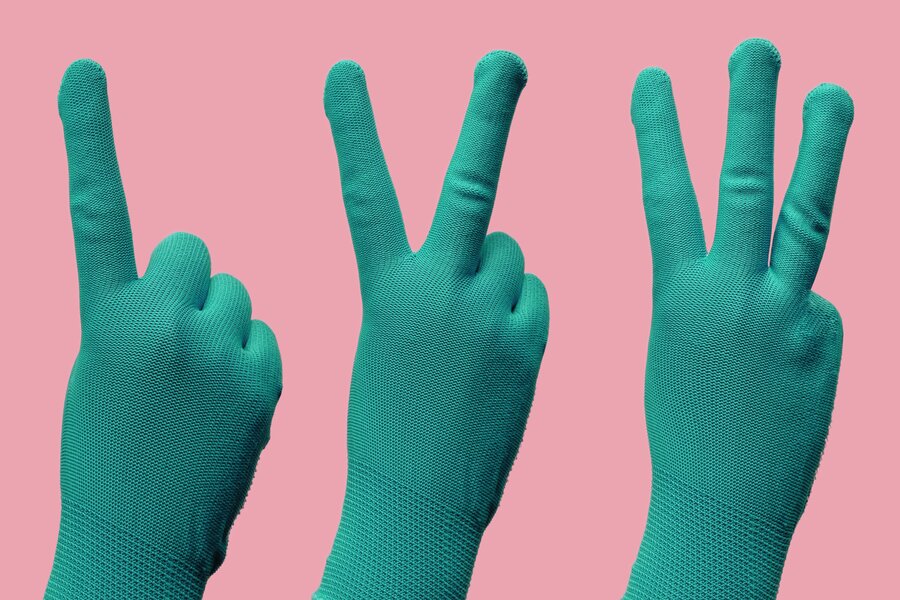
Over the course of the past year, NFTs have seen a meteoric rise in popularity. Large corporations such as Adidas, Nike, McDonald’s, Coca-Cola, and Prada are making significant investments in the process of incorporating non-traditional marketing tactics into their conventional commercial marketing strategy.
This is a significant step toward widespread adoption because ordinary customers will now have access to blockchain NFTs provided by their preferred brands.
These kinds of interactions can promote more interesting and engaging engagements with customers across both physical and digital channels. This is a very exciting opportunity for companies to interact with a new generation of customers, and it’s something that they should definitely take advantage of.
In addition, NFTs have made their way into the event marketing world. Since 2019, large conferences such as Consensus have provided guests with NFT presents as part of the event experience. The attendees of the conference are provided with a unique email link by which they can claim their NFTs, and they are free to do so at any moment during or after the conference.
In more recent years, the Academy Awards have begun giving non-fiction books (NFTs) as prizes to the victors of its competition. In order to generate one-of-a-kind artwork for their NFT trophies, the Academy Awards collaborated with the NFT marketplace Rarible.
The adoption rate of new event technologies by event organizers is expected to increase, which will lead to an increase in the number of events powered by NFT.
Incorporating NFTs into one’s own events is another way for businesses to capitalize on the benefits offered by these contests. The following are three ways in which NFTs can give a boost to business events:
- Non-Fungible Tokens (NFTs) as Tickets Non-fungible tokens, also known as NFT tickets, access passes that are stored on the blockchain. They provide access to live events as well as virtual ones.
- The use of NFTs as prizes: The use of NFTs as rewards refers to the provision of special blockchain-based rewards to event attendees in exchange for the successful achievement of an aim.
- Non-fungible tokens as mementos are digital non-fungible tokens that guests of an event can retain with them forever.
Over the course of the past few years, there have been a great number of NFT event experiences that have acquired traction. For instance, the United States of America played host to Gary Vee’s VeeCon in the month of May 2022. The conference broke new ground by becoming the very first large-scale event to sell tickets solely through non-traditional ticket outlets (NFTs).
The general public was not able to acquire tickets for the event, so the only people who were able to attend were the owners of Veefriend NFTs.
Canada has also hosted several unique NFT event experiences. The Toronto Raptors introduced their very own NFT collection in 2021, which was given the name 6ix Keys.
The owners of these digital artworks were given access to a variety of unique perks, including rare souvenirs signed by the artist, VIP events, and more. The collection included a wide variety of NFTs of varying rarities, each of which conferred a unique set of benefits to its owner.
The Vancouver Bar Crawl is yet another company that dominates the NFT event space in Canada. NFT souvenirs have been effectively included in the event, which has recently been ranked as the top bar crawl in all of Canada. In addition to this, it stated that it will be working together with sound artist Droktr to develop more one-of-a-kind NFT sound experiences.
When properly implemented into event marketing, NFTs are capable of delivering a plethora of benefits.
In the not-too-distant future, NFTs may be utilized as event tickets to not only provide guests with exclusive benefits but also with keepsakes to take home with them.
These kinds of experiences are only getting started but have a lot of promise, and I hope that the widespread use of NFTs will make it possible to participate in more NFT event experiences.
These kinds of experiences will be able to be included in the marketing strategies of companies, allowing them to attract a younger generation of customers.
For More NFT News, Click Here.



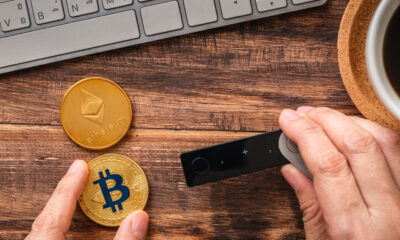

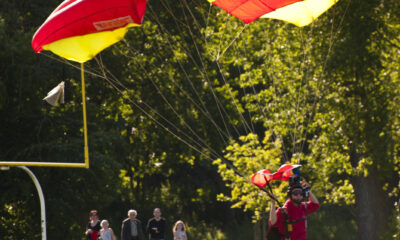



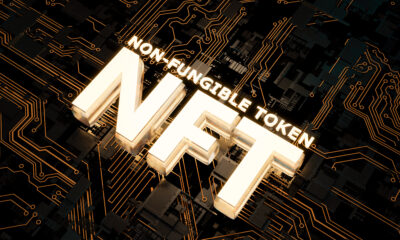

You must be logged in to post a comment Login